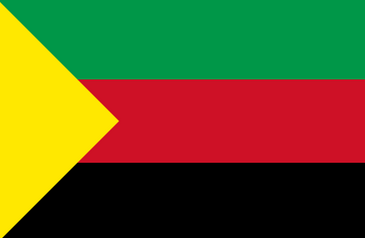CNN is reporting that Al Qaeda’s number 2, Abu Yahya al-Libi, was killed in a drone strike in Pakistan. This is a big deal in terms of the continued degradation of what is called Al Qaeda Central; the top leadership of the core Al Qaeda has been depleted to the point where it poses a much smaller threat to America and American interests than at any point in history.
Al Qaeda Central is on the way out, but al Qaeda’s franchises in other parts of the world are still going strong. This is from where the next frontier of security challenge comes.
– In Yemen, Al Qaeda in the Arabian Peninsula (AQAP) is clashing with government forces (backed by American drones) in the South of the country. They are fighting over towns and territory in the Abyan region where 150,000 people have been forced out of their homes. Meanwhile, the USA has a stake in this fight because AQAP is actively plotting attacks on US soil.
– In Somalia, Al Shebaab is the main threat to the fledgling central government. They seem to be on the retreat right now, after a joint African Union – Somali fight to push them out of Mogadishu, but they still control large swaths of the county. The epic drought and food crisis that Somalia experienced last year turned into a “famine” because al Shebaab blocked humanitarian access to beleaguered populations. Meanwhile, Al Shebaab has attacked targets internationally, most spectacularly the 2010 bombing of a bar in Kampala, Uganda during the World Cup.
– In Northern Mali, former Gaddafi allies (the Tuareg militant group MLNA ) are forming an alliance with the hardline Islamist Ansar Dine Al Qaeda affiliate to create a de-facto independent state called Azawad. This group currently controls the fabled city of Timbuktu, while the Tuaregs control large swaths of northern Mali. There is already speculation that this region may become the next jihadist launching pad (a “West African Afghanistan.”) For now, these groups have exacerbated a region-wide food crisis in the Sahel. Humanitarian agencies are unable to provide key nutrition and medical support to millions of people caught in the fighting in this region. To make matters worse, the UN Food and Agriculture Organization warned today that a swarm of locusts are headed to northern Mali — and there is nothing they can do about it because they can’t access the region to implement control measures.
Groups like Al Shebaab, AQAP and Ansar Dine have demonstrated an ability to put up a strong fight based on local grievances and also a desire (and sometimes capacity) to take that fight abroad. The humanitarian consequences of these three conflicts are among the most dire in the world.
Even though al Qaeda Central is becoming less and less relevant to American and global security, the al Qaeda franchises are sowing instability and misery — and could potentially pose direct threats to the United States. The problem is, managing these conflicts is a much more difficult task than taking out a small cadre of terrorists. Weak governance and hunger in Mali and Somalia are not problems that can be droned away.
